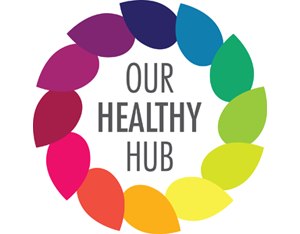Yes, it’s official! Since Kantar Media Research revealed that there are now 3,070,000 yogis (practitioners of yoga) in the UK, yoga has been regarded less of a fad stimulated by celebrity participation (Charlize Theron, Demi Moore, Colin Farrell, Julia Roberts being just a few who swear by the holistic benefits of yoga). Of course, those who are really into their yoga are well aware that something which is believed to have originated over 5,000 years ago in India is clearly not a fad, but in fact an ancient practice and belief system which spans the disciplines of physical, spiritual and emotional exercise with the aim of bringing harmony and balance to body, mind and spirit.
So why is it so popular now?
In 21st century Britain, between what feels like an eternal ‘age of austerity’, employment stress (finding, keeping or getting paid more than the minimum for your job) and the demands of juggling our hectic lives, it seems we’ve been seeking a means of disconnecting from the stress of it all by reconnecting with ourselves. With yoga now well embedded in the UK’s health and fitness industry through dedicated yoga studios, classes and a percentage of those 3 million plus yogi who are qualified trainers, accessing yoga has become much easier. Add to this the viral popularity of YouTube ab-toning yoga videos, a prevalence of celebrity endorsed yoga DVDs and apps in the fitness media market, all of which creates interest in the benefits of yoga as well as wider interest into its holistic benefits. As a result, its popularity has soared.
Another reason why yoga’s in demand now is that with our 21st century lifestyles come medical conditions which may actively prevent us from taking up other forms of exercise such as energetic aerobics classes, running or dance. Yoga can be practiced to great benefit by the old, the pregnant and even, to some extent, the ill, with mainstream news reports from the Daily Mail (2014) and the Daily Telegraph (2013) about how yoga can benefit sufferers from cancer and blood pressure.
All you need to do is choose the right yoga discipline:
SATYANANDA
The gentlest form of yoga, Satyananda is ideal for beginners. It focuses on deep breathing and flexibility through slow stretches and also teaches deep breathing.
HATHA
Another great version of yoga for beginners, Hatha offers more extensive stretching exercises but still at a relatively low-impact level, making it also suitable for older adults or those with health concerns. London based gym, The Factory, cite Hatha as a great way to start your yoga journey; allowing for poses to be modified based on physical challenges, such as recovering for injury for example.
IYENGAR
Iyengar is a yoga discipline which concentrates on body aligment and balance through postures. Props such as blocks and straps are used to help maintain postures.
KUNDALINI
The Kundalini yoga workout is more intensive, with faster paced routines and postures including a range of different breathing methods, including deep breathing, meditation and chanting.
BIKRAM (also known as MOSHKA or “HOT YOGA”)
With an added focus on the benefits of purification and developing stamina, Bikram yoga sessions take place in a heated room, making it an intensive, whole body workout. This level is more suited to those with high fitness levels and not those with heart or blood pressure health conditions.
ASHTANGA (“POWER YOGA”)
For the added benefit of weight loss in addition to those other holistic benefits of stamina, flexibility and core strength for mind and body, Ashtanga is the higher impact yoga workout. It’s more suitable for those who already have a certain fitness level to start with.
Finally, like any form of exercise, it’s beneficial when you’re doing it right. So although having multimedia access to online yoga classes is great, beginners especially are recommended to attend a few sessions with a qualified yogi, so that you can be sure you are creating postures properly for maximum benefit, not accidental damage.
![]()
*Image from Flickr and member a4gpo.














